| |||||||||||||||||||||
| |||||||||||||||||||||
| |||||||||||||||||||||
| Elections in Iowa |
|---|
 |
The 1883 Iowa gubernatorial election was held on October 9, 1883. Incumbent Republican Buren R. Sherman defeated Democratic nominee L. G. Kinne with 50.15% of the vote.
| |||||||||||||||||||||
| |||||||||||||||||||||
| |||||||||||||||||||||
| Elections in Iowa |
|---|
 |
The 1883 Iowa gubernatorial election was held on October 9, 1883. Incumbent Republican Buren R. Sherman defeated Democratic nominee L. G. Kinne with 50.15% of the vote.
Major party candidates
Other candidates
| Party | Candidate | Votes | % | ±% | |
|---|---|---|---|---|---|
| Republican | Buren R. Sherman (incumbent) | 164,095 | 50.15% | ||
| Democratic | L. G. Kinne | 140,012 | 42.79% | ||
| Greenback | James B. Weaver | 23,089 | 7.06% | ||
| Majority | 24,083 | ||||
| Turnout | |||||
| Republican hold | Swing | ||||

The 1836 United States presidential election was the 13th quadrennial presidential election, held from Thursday, November 3 to Wednesday, December 7, 1836. In the third consecutive election victory for the Democratic Party, incumbent Vice President Martin Van Buren defeated four candidates fielded by the nascent Whig Party.

The 1888 United States presidential election was the 26th quadrennial presidential election, held on Tuesday, November 6, 1888. Republican nominee Benjamin Harrison, a former Senator from Indiana, defeated incumbent Democratic President Grover Cleveland of New York. It was the third of five U.S. presidential elections in which the winner did not win a plurality of the national popular vote, which would not occur again until the 2000 US presidential election.
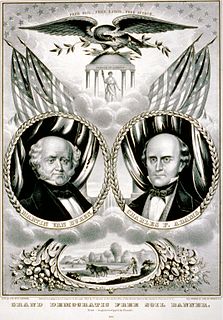
The Free Soil Party was a short-lived coalition political party in the United States active from 1848 to 1854, when it merged into the Republican Party. The party was largely focused on the single issue of opposing the expansion of slavery into the western territories of the United States.

The 1956 United States Senate elections were elections for the United States Senate that coincided with the re-election of President Dwight D. Eisenhower. Although Democrats gained two seats in regular elections, the Republicans gained two seats in special elections, leaving the party balance of the chamber unchanged.

In the United States Electoral College, a faithless elector is an elector who does not vote for the candidates for U.S. President and U.S. Vice President for whom the elector had pledged to vote, and instead votes for another person for one or both offices or abstains from voting. As part of United States presidential elections, each state selects the method by which its electors are to be selected, which in modern times has been based on a popular vote in most states, and generally requires its electors to have pledged to vote for the candidates of their party if appointed. A pledged elector is only considered a faithless elector by breaking their pledge; unpledged electors have no pledge to break. The consequences of an elector voting in a way inconsistent with their pledge vary from state to state.

The 48th United States Congress was a meeting of the legislative branch of the United States federal government, consisting of the United States Senate and the United States House of Representatives. It met in Washington, D.C. from March 4, 1883, to March 4, 1885, during the last two years of the administration of U.S. President Chester A. Arthur. The apportionment of seats in the House of Representatives was based on the Tenth Census of the United States in 1880. The Senate had a Republican majority, and the House had a Democratic majority.
The Massachusetts Republican Party (MassGOP) is the Massachusetts branch of the U.S. Republican Party.

The 1832 Democratic National Convention was held from May 21 to May 23, 1832, in Baltimore, Maryland. In the first presidential nominating convention ever held by the Democratic Party, incumbent President Andrew Jackson was nominated for a second term, while former Secretary of State Martin Van Buren was nominated for vice president.
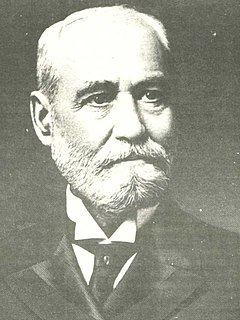
John Taylor Hamilton was a businessman from Cedar Rapids, Iowa, and a one-term Democratic member of the United States House of Representatives from Iowa's 5th congressional district.

The 1875 New York state election was held on November 2, 1875, to elect the Secretary of State, the State Comptroller, the Attorney General, the State Treasurer, the State Engineer, a Canal Commissioner and an Inspector of State Prisons, as well as all members of the New York State Assembly and the New York State Senate.
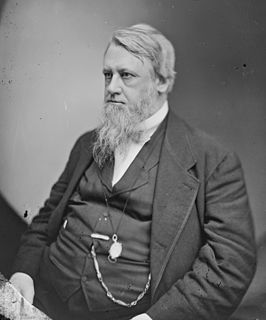
The 1882 and 1883 United States Senate elections saw the Republicans retain a narrow majority — 39 out of 76 — with the Readjusters in their caucus.
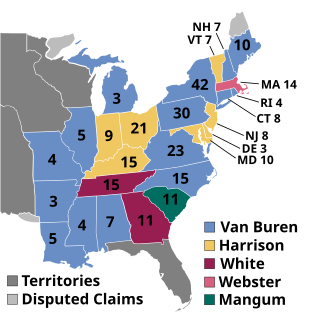
The 1836 United States elections elected the members of the 25th United States Congress. The election saw the emergence of the Whig Party, which succeeded the National Republican Party in the Second Party System as the primary opposition to the Democratic Party. The Whigs chose their name in symbolic defiance to the leader of the Democratic Party, "King" Andrew Jackson, and supported a national bank and the American System. Despite the emergence of the Whigs as a durable political party, Democrats retained the presidency and a majority in both houses of Congress.

The 1966 United States Senate election in Maine was held on November 8, 1966. Incumbent Republican U.S. Senator Margaret Chase Smith was re-elected to a fourth term over Democratic State Senator Elmer H. Violette.
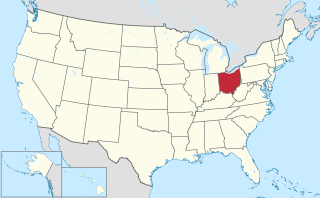
Following is a table of United States presidential elections in Ohio, ordered by year. Since its admission to statehood in 1803, Ohio has participated in every U.S. presidential election.
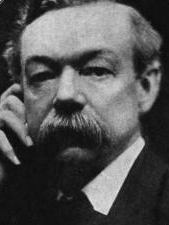
The Boston mayoral election of 1901 occurred on Tuesday, December 10, 1901. Democratic candidate Patrick Collins defeated Republican candidate and incumbent Mayor of Boston Thomas N. Hart, and two other contenders.
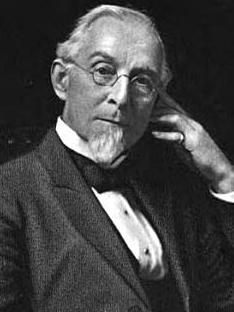
The Boston mayoral election of 1899 occurred on Tuesday, December 12, 1899. Republican candidate and former mayor of Boston Thomas N. Hart defeated Democratic candidate Patrick Collins, and two other contenders, to become mayor for the second time. Incumbent mayor Josiah Quincy had announced in July 1899 that he would not seek re-election.

The 1948 New Hampshire gubernatorial election was held on November 2, 1948. Republican nominee Sherman Adams defeated Democratic nominee Herbert W. Hill with 52.21% of the vote.

The 1881 Iowa gubernatorial election was held on October 11, 1881. Republican nominee Buren R. Sherman defeated Democratic nominee L. G. Kinne with 56.72% of the vote.